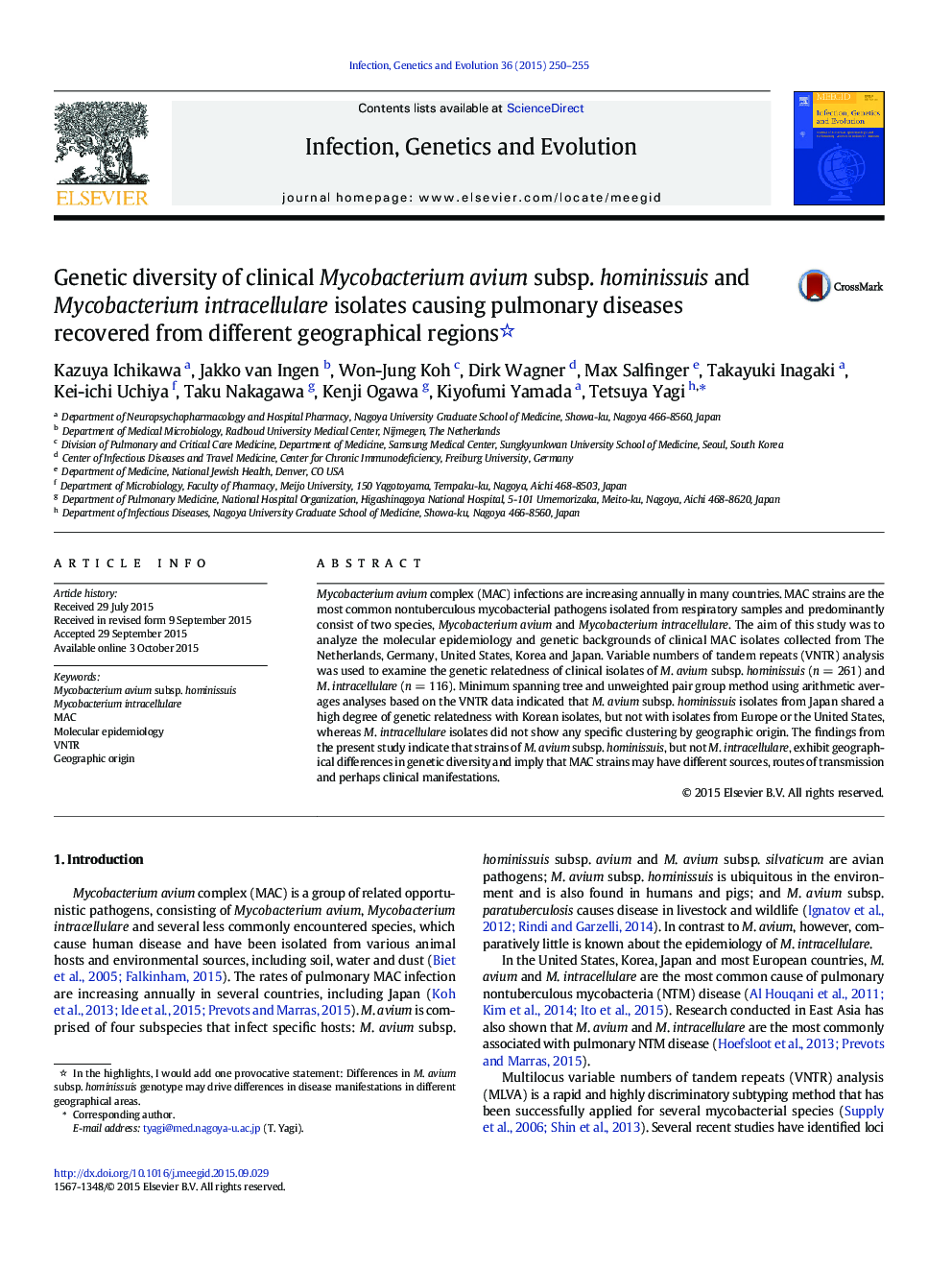| Article ID | Journal | Published Year | Pages | File Type |
|---|---|---|---|---|
| 5908571 | Infection, Genetics and Evolution | 2015 | 6 Pages |
â¢M. avium and M. intracellulare clinical isolates causing pulmonary diseases were analyzed using VNTR typing.â¢Differences in M. avium genotypes may drive differences in disease manifestations in different geographical areas.â¢ISMav6 was highly prevalent among clinical M. avium isolates in Japan and Korea.â¢Genotypes of M. intracellulare were more diverse and did not cluster based on the region of isolation.
Mycobacterium avium complex (MAC) infections are increasing annually in many countries. MAC strains are the most common nontuberculous mycobacterial pathogens isolated from respiratory samples and predominantly consist of two species, Mycobacterium avium and Mycobacterium intracellulare. The aim of this study was to analyze the molecular epidemiology and genetic backgrounds of clinical MAC isolates collected from The Netherlands, Germany, United States, Korea and Japan. Variable numbers of tandem repeats (VNTR) analysis was used to examine the genetic relatedness of clinical isolates of M. avium subsp. hominissuis (n = 261) and M. intracellulare (n = 116). Minimum spanning tree and unweighted pair group method using arithmetic averages analyses based on the VNTR data indicated that M. avium subsp. hominissuis isolates from Japan shared a high degree of genetic relatedness with Korean isolates, but not with isolates from Europe or the United States, whereas M. intracellulare isolates did not show any specific clustering by geographic origin. The findings from the present study indicate that strains of M. avium subsp. hominissuis, but not M. intracellulare, exhibit geographical differences in genetic diversity and imply that MAC strains may have different sources, routes of transmission and perhaps clinical manifestations.
